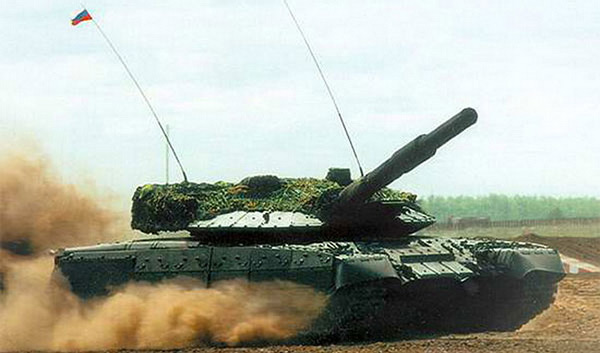
A huge problem for the Russian navy, in addition to the shortage of large surface ships and the almost complete absence of aircraft carriers, is its aging. Built during the Soviet era, ships are gradually depleting their resource, which can be renewed through upgrades, but, Alas, not endlessly. Thanks to a successful project 22350, we were able to create a frigate, meeting all modern challenges. But what about bigger ships, destroyers and cruisers? In what direction should the shipbuilding program for the Russian Navy develop further?
Destroyers are one of the most versatile and multipurpose warships, designed to combat ships, submarines and enemy aircraft, protection of ship groupings and their formations. Nowadays, the line between the destroyer, heavy frigate and light cruiser became very fragile. If desired, large anti-submarine ships of the project can also be attributed to them as part of the Russian Navy. 1155, and patrol ships projects 11540, and modern frigates of the project 22350. But the only "chemically pure" destroyer we have is the project 956 Sarych. These destroyers were created to destroy enemy ships and support amphibious assault forces., anti-aircraft and anti-submarine defense. Of the planned 25 managed to build only 21 Sarych, but after the collapse of the USSR, funding for the fleet fell sharply, the repairs necessary for the ships were not carried out, and in the end most of them were sent for scrap or sold. Today, the Russian Navy has only 6 3rd generation Soviet destroyers, "Smeared" across the Northern and Pacific fleets, and only 3 ship, 2 in reserve and one is under repair and modernization. For their time, "Sarychi" were formidable destroyers, capable of performing a wide range of tasks. Given the acute shortage of large surface ships, it is necessary to use the potential inherent in them for modernization, which will increase their combat capabilities. However, there is no need to experience unnecessary illusions.: project 956 belongs to the 3rd generation, objectively yielding to a direct rival in the person of the destroyer "Arlie Burke", which belongs to the 4th generation. It's not even quite correct to compare them., although it is due to the lack of alternatives. So, what is next?As an alternative to Sarych, Russia has designed a promising nuclear-powered destroyer "Leader", which was supposed to replace ships of several classes at the same time: and destroyers of the project 956, and BOD project 1155, and heavy nuclear missile cruisers of the project 1144 'Trencher'. The full displacement of the "Leader" was supposed to be almost 20 thousand tons, responsible for unlimited cruising range 2 nuclear reactor, and missile weapons were 64 universal launchers for "Calibers", "Onyx" and "Zircon". Remarkable characteristics, however, the head of the USC Rakhmanov stunned everyone with his statement about the big problems on this project:In that form, in which it was planned before, he, likely, will not be implemented, at least, not so fast. But here everything depends on the decision of the customer - the Ministry of Defense..
What went wrong? As it appears, the main problem was the over-complication of the project, into which they tried to cram all conceivable functionality, so that only one ship can perform tasks and BOD, and destroyer, and a heavy missile cruiser at the same time. The pursuit of versatility has driven up costs, which even according to preliminary estimates should have reached 100 billion for 1 ship. Explicit overkill for a serial destroyer. And then, there are big doubts, that the Russian Navy needs such a "nuclear Yamato". Yes, unlimited range and powerful missile armament are great, but who are the "Leaders" against? Against US Navy AUG as "aircraft carrier killer"? apparently, Yes, but somehow everyone forgets to mention, that the real chances of any ship group (KUG) against an aircraft carrier strike group are very small. Availability of AWACS aircraft, based on Nimitz, will allow Americans to see our IBM long before, how can we, since we do not have our own AWACS aircraft, and the AWACS helicopter has a much smaller radius. And then the US Navy carrier-based aircraft will be able to deliver several over-the-horizon massed missile strikes., which our fleet will not be able to reflect, even if he sees, or maybe not at all. The conclusion is simple: without its own aircraft carrier, having an AWACS aircraft on board, as well as a fighter aircraft wing for air defense, Against the AUG, the US Navy has nothing special to catch. Consequently, how many "Leaders" for 100 we have not riveted billions, there will not be much sense from them without an aircraft carrier in a pair. Recall, that the Eagles were also designed to operate in conjunction with an aircraft carrier. So why are the developers of such complex and expensive projects, as "Leader", forget about it? (By the way, they, who sinks against the construction of aircraft carriers for the Russian Navy, for the above reasons, or do not understand at all, what they say, either understand, but are engaged in outright sabotage. Without aircraft-carrying ships, the ocean-going fleet is, in principle, meaningless.)No, we do not oppose the "Leader", this is a great ship, but in the atomic-powered version, it is needed to replace the Eagles as flagships of the Northern and Pacific fleets only in conjunction with a pair of aircraft carriers, light or medium. Then he will really be useful.. But let's get back directly to the destroyers.. We have already figured it out, that the atomic semi-destroyer-semi-cruiser "Leader" is not quite suitable for replacing "Sarych" and BOD. A simpler and more massive ship is objectively needed here.. Let's take a look at direct competitors., the best destroyer in the world today is the American "Arleigh Burke". This is the largest series surface ship with a displacement over 5 thousand tons since the end of World War II: already built 68, still under construction 6, and everything is planned 89 destroyers of this type for the US Navy. And no wonder. With a full displacement of 9,6 thousand tons, maximum speed in 32 host, on the nose "Arlie Burke" has 32 universal launcher cells, and at the stern - 64, which, if necessary, can be re-equipped with anti-aircraft, anti-ship or cruise missiles, for a specific combat mission. Destroyers of this type are the carrier for the Aegis system and an integral part of the United States' unified anti-missile system.. These are really very nice ships., their functional counterpart called the "Congo" type is in service with the Japan Maritime Self-Defense Forces. In fact, "Arli Berk" – it is the universal "workhorse" of the US Navy, proven and reliable. All sorts of "wunderwaffe", like "Zamvolta", turned out to be unclaimed, and of the planned 33 "Super destroyers" in the series, the Americans canceled 29, which allows us to draw some parallels with our atomic "Leaders". This gives grounds for drawing some conclusions.. Against almost 9 dozens of "Arlie Berks", included in 11 AUG US Navy, The Russian Navy needs its own massive and relatively inexpensive destroyers, a pair of nuclear "Leaders" as flagships to replace the aging "Eagles", as well as 2 aircraft carrier, light or medium, at a gas turbine or atomic (atomic more reliable), as part of the Northern and Pacific fleets, respectively. But what kind of destroyers should they be?? Several options are possible.
"Mini-Leader"
Displacement of the project semi-destroyer-semi-cruiser 23560 reaches almost 20 thousand tons, it provides 2 nuclear reactors RITM-200 175 MW, and 64 universal launchers for "Calibers", "Onyx" and "Zircon". Great, but it's all worth it, as we indicated above, 100 billion rubles apiece, and will not give a decisive advantage over the AUG of a potential enemy without its own aircraft carrier. However, nothing prevents to simplify and reduce the cost of this project.. Instead 20 thousand tons to make a displacement of 9,5-10 thousand tons, replace the nuclear power plant with a gas turbine. The number of launch cells will decrease slightly, but will remain comparable to Arleigh Burke. But the complexity and cost of the project will decrease by a factor of 2-2,5. According to the plans of the Defense Ministry, minimum number of ships of the project 23560 should have been 8 pcs, maximum - 20. At a price in 100 billion it was a little expensive, which led to the abandonment of the project in this form. But if you put into the series "Mini-Leader", then instead of 8 pieces for the same price you can get the required 20 normal destroyers, and instead of 20 – 50 pcs. This is already serious. Any enemy will have to reckon with such a fleet., and these destroyers are more than enough to protect the much needed Russian Navy aircraft carriers and UDC.
"Super-frigate"
Another possible direction, how can you close the gap on destroyers, this is to increase the frigate of the project 23500. Actually, such plans are already known. The 22350M version should have a full displacement of 8 thousand tons against 5,4 the predecessor, maximum speed in 30 knots, and 48 universal cells for missiles "Caliber", Onyx and Zircon. It's not even a frigate anymore, but almost a destroyer. But still, it is inferior to the "Arleigh Burke" in size and armament. If we add more to the 22350M project 1-1,5 thousands of tons of displacement and two dozen cells for missiles, our "super-frigate" will turn into a ship comparable in power and combat capabilities. The bookmark of the head frigate of the modernized version should take place already in 2023 year, when the new boathouse at Severnaya Verf will be ready., we have at least two options for, how can we close the gap on destroyers. The main thing is to understand, what kind of navy and why are we building. It is possible to combine them in some variants.: 2 nuclear "Leader" as future flagships in conjunction with 4 light or medium aircraft carriers, divided into Northern and Pacific fleets, a dozen "Mini-Leaders" and the same number of "super-frigates" to guard promising AUG. This is quite realistic for the capabilities of our shipbuilding industry and can radically increase the capabilities of our Navy..
Sergey Marzhetsky











